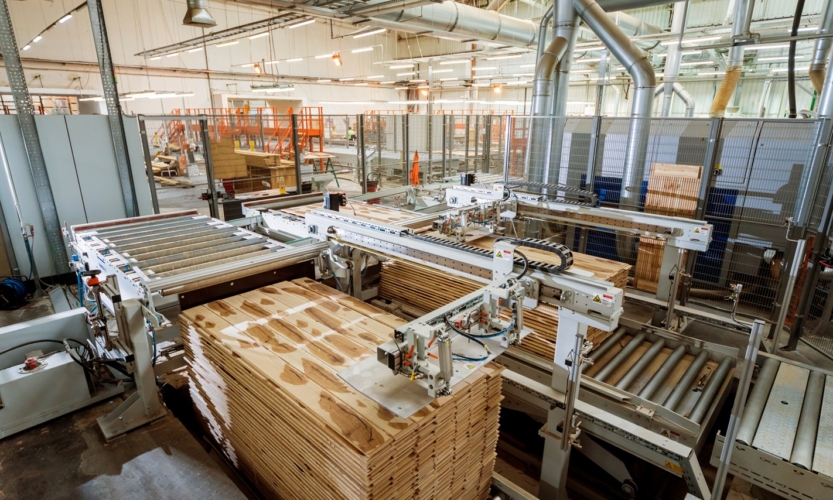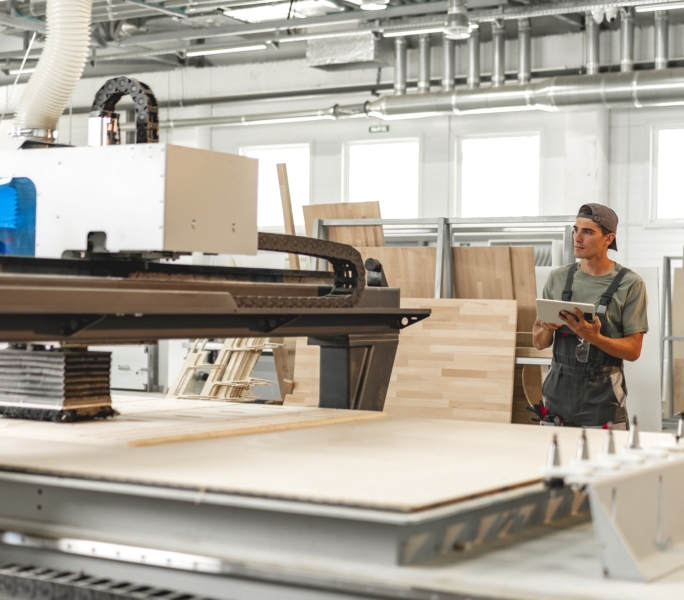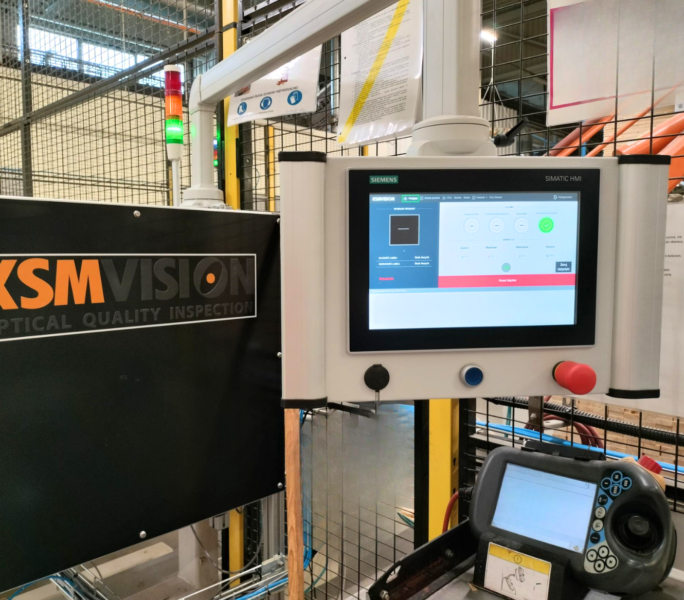Automated systems
optical quality control
based on artificial intelligence
to solve challenges of
wood-based product manufacturers

-

Challenges of the wood quality control
The dynamic development of the sector, rising costs of materials and the lack of wood industry specialists on the labor market are the main challenges faced by the wood industry.
Manufacturers who better use IT tools, technological innovations and understand the need for automation, robotization and digitization of processes gain an advantage.
Woodspect from KSM Vision is an innovative, multi-sensor optical system with advanced automation and software based on neural networks, adapted to corporate requirements in the field of plant IT systems: data exchange, user authorization management, reporting.
Woodspect’s task is to completely replace manual product inspection, increasing the effectiveness and scalability of production process control, contributing to solving the challenges of the wood quality control.
-

Woodspect for quality control of boards, lamellas, panels and boards
-

Kontrola jakości drewna wsparta przez sieci neuronowe
The algorithm used in the Woodspect wood product defect detection system based on neural networks achieves a wood defect classification efficiency of 98% (compared to 90% classification accuracy in the case of manual inspection), with a low number of samples classified incorrectly.
Woodspect’s artificial intelligence can, for example, distinguish a crack from saw marks or a resin pocket from resin.
Woodspect applications include:
– detection of defects on raw boards – algorithms based on neural networks enable the detection of defects such as: resin pockets, broken knots, mechanical damage. This type of quality control can be used, among others, for: to eliminate defects in pin connections of slats and to automate the repair of the surface of products.
– precise measurement of 3D geometry – through the use of the laser triangulation method, it enables accurate measurement of the surface of boards after mechanical processing. This type of quality control can be used, among others, for: for detecting the volume of defects, which enables the automation of the filling process.
Machine vision
and neural networks
to increase efficiency
of wood processing industry
Manufacturers of furniture and wood flooring can gain many benefits from using AI-based vision systems to control product quality. Such systems allow for precise detection of all flaws and defects in wooden elements, which translates into:
- Higher product quality: AI systems enable the elimination of defective products, which increases the quality of the final furniture and flooring.
- Cost reduction: Avoiding the production of defective elements translates into savings in raw materials and production costs.
- Increased efficiency: AI-based quality control is faster and more accurate than manual inspection, speeding up the production process.
- Consistency and Accuracy: Vision systems provide consistent inspection quality that is difficult to achieve with manual product evaluation.
- Safety: Reducing the need for employee intervention in the inspection process can reduce the risk of accidents and damage.
- Adaptation to market requirements: AI systems can be programmed to adapt to various quality standards and product specifications.
- Monitoring trends: Collecting data from the quality control process allows you to analyze trends and identify sources of problems, which helps you improve your production process.
The introduction of AI-based vision systems for quality control of wooden furniture and flooring products can contribute to increasing market competitiveness by improving product quality, reducing costs and increasing production efficiency.
